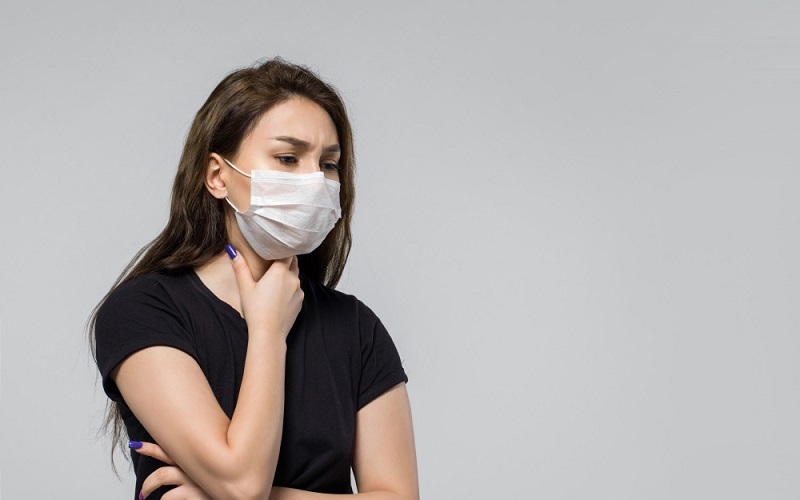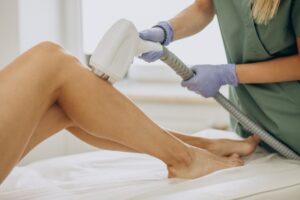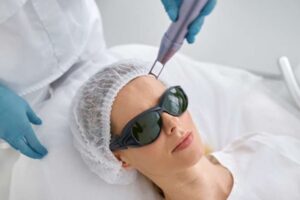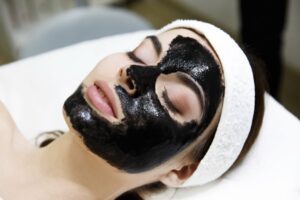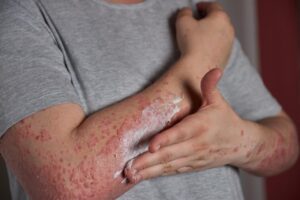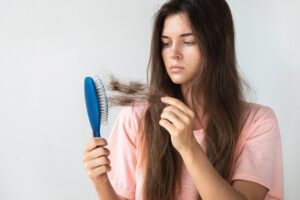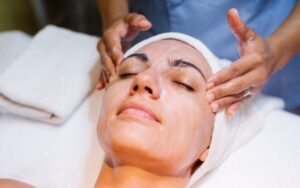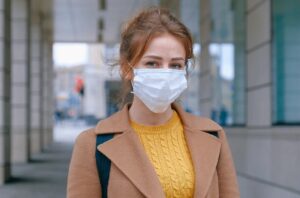
Wearing a face mask to prevent the spread of COVID-19 has become the new routine in our life. But are you observing any increased incidence of acne break-outs, skin irritation? Then you are not the only one who is facing this issue. This is called ‘Mask Acne’ or ‘Maskne’
Mask acne/ maskne is a new term that is an unfortunate side effect of the daily mask-wearing that we’re all doing to slow the transmission of Covid-19.
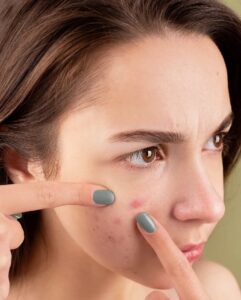
Masks trap sweat, sebum, saliva, and the miscellaneous bacteria that are expelled from your mouth up against your skin. This gross stuff then sits and thrives in the hot, humid environment that’s created when you breathe into a mask all day. This damages the skin’s protective barrier, meaning bacteria can then penetrate it and cause pimples, while oil and products clog the pores.
To make matters worse, face masks also constantly rub against your skin, causing friction and irritation. This can result in red, inflamed, and painful breakouts called acne mechanica, a type of maskne that’s more likely to affect people who have dry, sensitive skin, and healthcare and front-line workers who must wear tighter-fitting PPE for long stretches of time.
What to know about maskne skin conditions
Generally, “maskne” is an umbrella term for several skin conditions that can be caused by wearing a face mask or covering. It can include:
- Acne. Acne happens when your pores become clogged with oil, dead skin cells, and dirt. It can cause pimples, whiteheads, or blackheads.
- Rosacea. If you have rosacea, wearing a mask may cause flare-ups. This can lead to pimples and redness.
- Contact dermatitis. Contact dermatitis occurs when you’re allergic or sensitive to the material of your mask. It can result in a red rash, along with irritation and blisters.
- Folliculitis. Folliculitis, or an infection of your hair follicles, causes bumps that look like an acne breakout. You might also experience itchiness or pain.
If you already have one of these conditions, you may be more prone to developing maskne.
What causes it?
Because maskne can involve various skin conditions, the exact cause of your symptoms may vary.
In most cases, maskne is the result of clogged pores. You already have oil, bacteria, and dead skin cells on your skin. But when you wear a mask, these substances can build up more and block your pores.
A mask also traps humidity due to your breathing and sweating, which may increase the risk of acne.
Another possible cause is friction. The material of a face covering can rub against your skin, leading to chafing and irritation.
Or you may be sensitive or allergic to the material of your face covering. Some masks are pretreated with chemicals or feel rough on the skin. Similarly, wearing a mask that’s been washed in a scented detergent may cause irritation.
What do I do?
It’s essential to keep wearing a face mask, even if you have maskne. Keeping your mouth and nose covered is one of the best ways to protect yourself and those around you from COVID-19.
There are several ways to treat maskne symptoms. Let’s take a closer look at each step.
1.Choose the right mask
To avoid skin issues, be mindful of the type of mask you wear.
Try to wear a face mask that:
- fits snugly, but not too tight
- has two or more layers of fabric
- is made of natural, soft fabric (like cotton)
Avoid masks made of synthetic fabrics, such as nylon or rayon. These materials can irritate the skin.
2.Wash your face regularly
During the pandemic, continue following your regular skincare routine to keep your skin healthy.
This includes washing your face:
- once in the morning
- once at night, before going to bed
- after sweating or wearing a mask
When washing your face, use lukewarm water. Pat your skin dry with a clean towel. Avoid rubbing your skin as this may cause irritation.
3.Use a gentle cleanser
A gentle cleanser can help remove excess oil, sweat, and bacteria. Avoid cleansers that contain alcohol or perfume. These ingredients can cause irritation and make it harder for your symptoms to heal.
If your mask acne is more severe, try a medicated cleanser with benzoyl peroxide or salicylic acid.
If you have sensitive skin, consult your dermatologist about the best type of medicated cleanser for your skin.
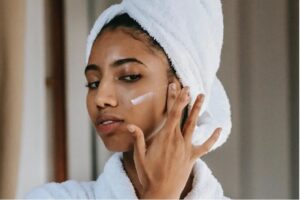
4.Use a non-comedogenic moisturizer
After washing your face, apply a moisturizer to keep your skin hydrated. Use a non-comedogenic product, which likely won’t block your pores.
5.Take a break from makeup
Skip the makeup while you’re treating maskne. Beauty products such as foundation, concealer, and blush can clog your pores and prolong healing.
6. Wash fabric masks after every use
Never reuse a cloth mask without first washing it. Use unscented hypoallergenic laundry detergent, then let it dry completely.
7.Toss disposable masks after each use
After wearing a disposable mask, throw it away. Consider keeping several face masks on hand in case you need a fresh one.

8.Remove your mask every 4 hours
The American Academy of Dermatology Association recommends removing your mask for 15 minutes every 4 hours. This will help give your skin a break.
You should remove your face mask only when you can practice physical distancing with people who aren’t in your household. It’s also important to wash your hands before taking a mask break.
9.Apply moisturizer before wearing a mask
If your skin tends to be dry, a mask may cause irritation. Applying a noncomedogenic moisturizer can help hydrate your skin. A moisturizer can also serve as a barrier between your skin and the mask.
10.Wash your face after you are done wearing a mask
Once you’re back at home, wash your face with a gentle cleanser followed by a moisturizer to protect your skin. Washing your face is especially important after sweating while wearing a mask.
The bottom line
Maskne, or mask acne, involves acne breakouts from wearing a face mask. Symptoms may include chafing and irritation, along with pimple-like bumps.
Although maskne can be frustrating, it’s important to keep wearing face coverings during the COVID-19 pandemic. Regular face-washing, moisturizing, and wearing the right type of mask may help prevent skin problems.
If your maskne is more severe, or if it still persists after trying these recommendations, be sure to follow up with your dermatologist.


